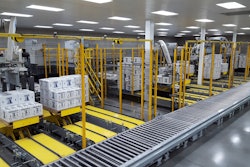
Work conducted by Professor Rosalba Lanciotti and her research team at the University of Bologna’s Department of Agricultural and Food Sciences and published in Frontiers in Microbiology, follows a research study published in late June that showed corrugated containers keep fruit and vegetables fresh up to three days longer than RPCs.
The research revealed that microorganisms died much quicker when placed on corrugated surfaces where they get trapped in the paper fibers and die due to a lack of water and nutrients. Conversely, the research showed that microorganisms survive longer on plastic surfaces.
“We’re pleased to see the University of Bologna’s research published in a scientific journal. It reinforces our industry’s commitment to use science in seeking facts about the performance of corrugated packaging,” said Dennis Colley, President and CEO of the U.S.-based Fibre Box Association (FBA).
“This latest work is important because it explains why corrugated stops bacteria. The ability of corrugated packaging to trap microorganisms and pull them away from fruits and vegetables is a clear sign that produce will arrive fresher and last longer packed in corrugated boxes.”
The study looked at pathogenic microorganisms that could cause foodborne illness and spoiling microorganisms that could affect shelf life and the quality of fruit. After both corrugated and plastic surfaces were inoculated, the cell loads of the microorganisms were checked over time.
Scanning electron microscope (SEM) images showed that after a few hours the superficial contamination on corrugated surfaces was much lower than on plastic materials. Corrugated surfaces were able to entrap the microbial cells within their fibers. Once the cells were trapped, researchers observed how they underwent lysis: their cell walls and membrane ruptured, the cytoplasm leaked, and the cell disintegrated. This phenomenon occurred in all the studied target microorganisms, both pathogenic and spoilage.
By contrast, the SEM images of plastic showed smooth, continuous surfaces unable to trap microorganisms.
Tests for both packaging materials were conducted under the same environmental and correct storage conditions.
Professor Lanciotti’s recent work and the study published earlier this summer were initiated by the European Federation of Corrugated Board Manufacturers (FEFCO).

























